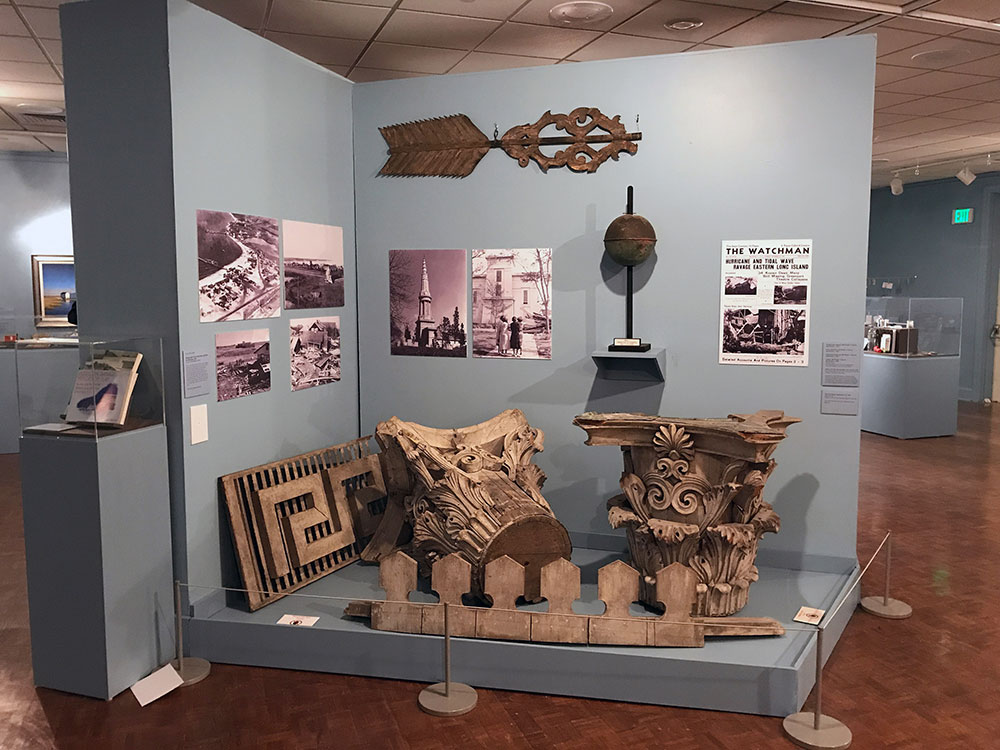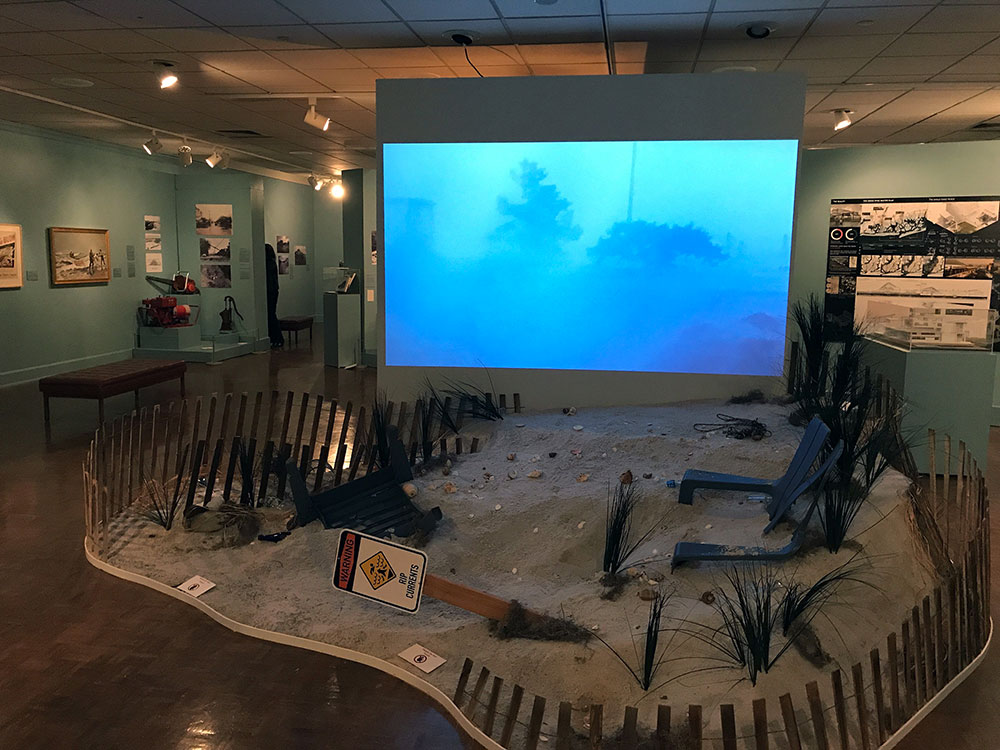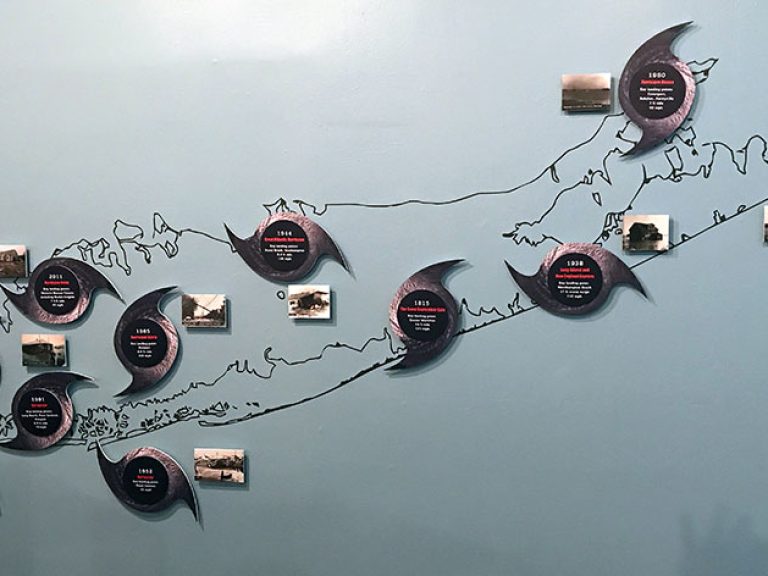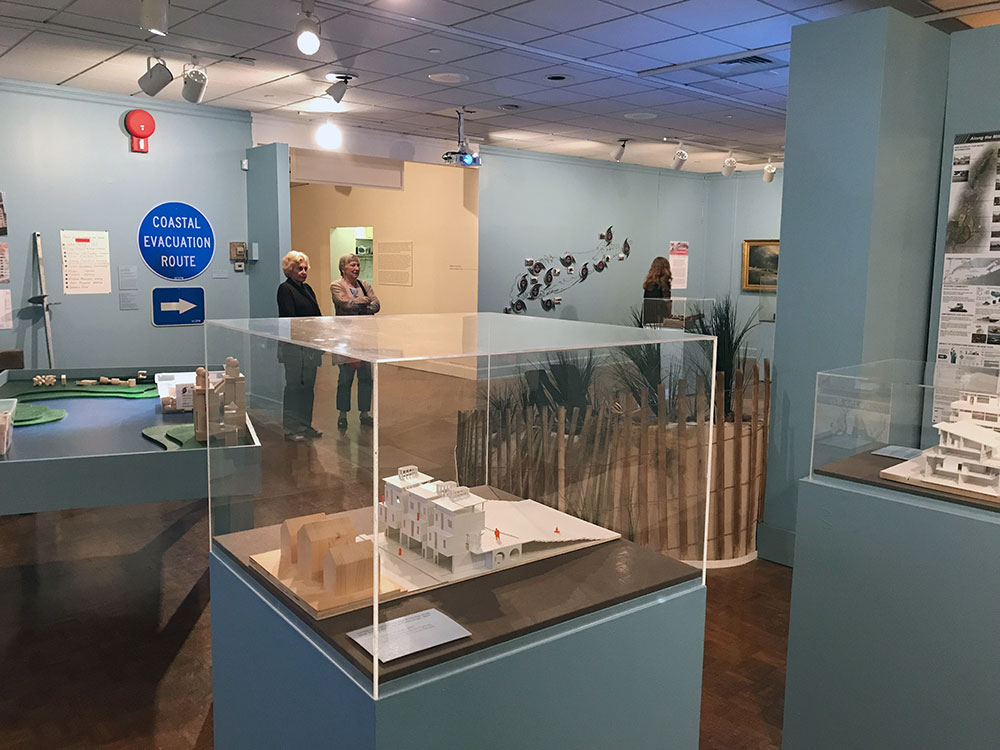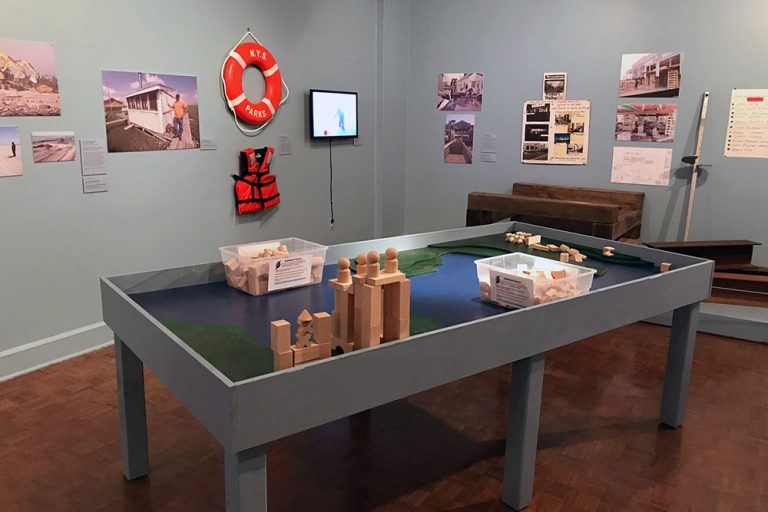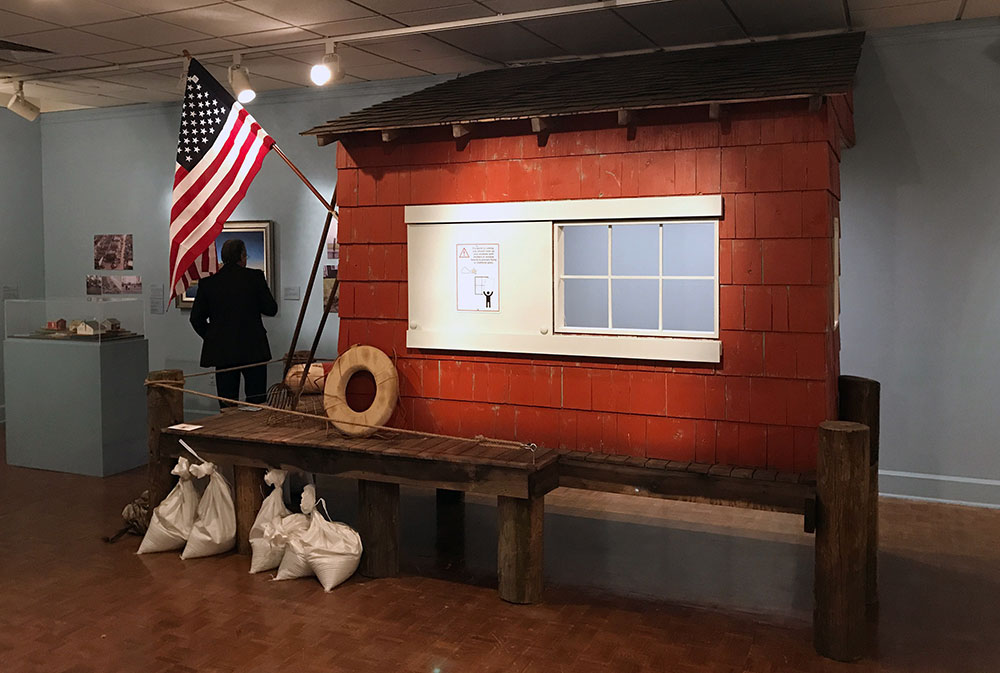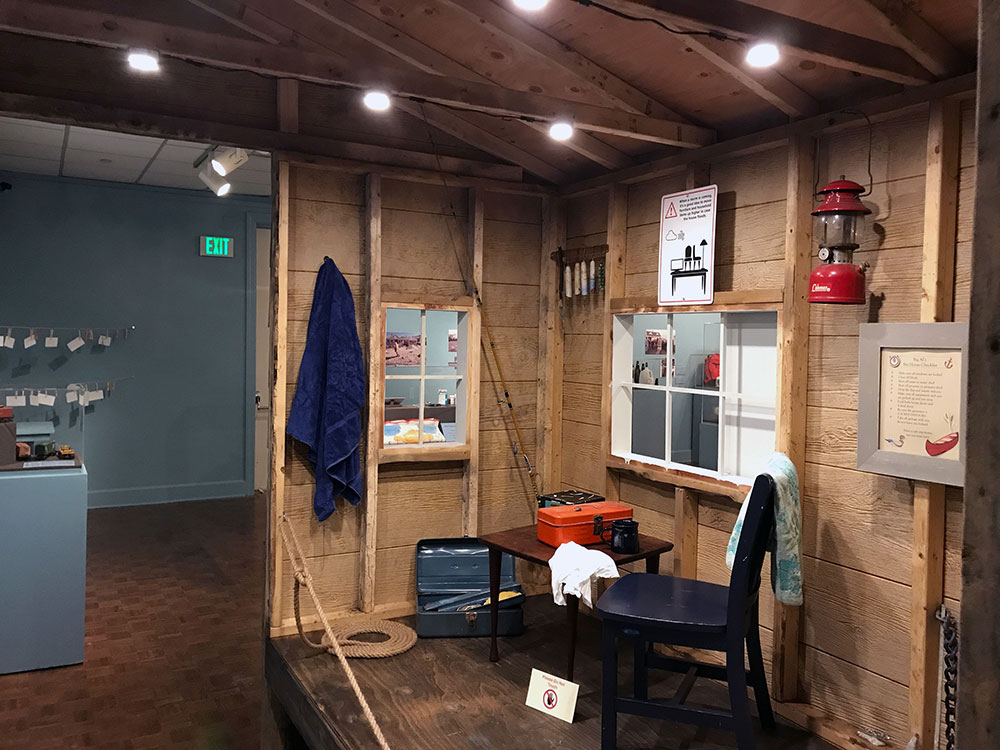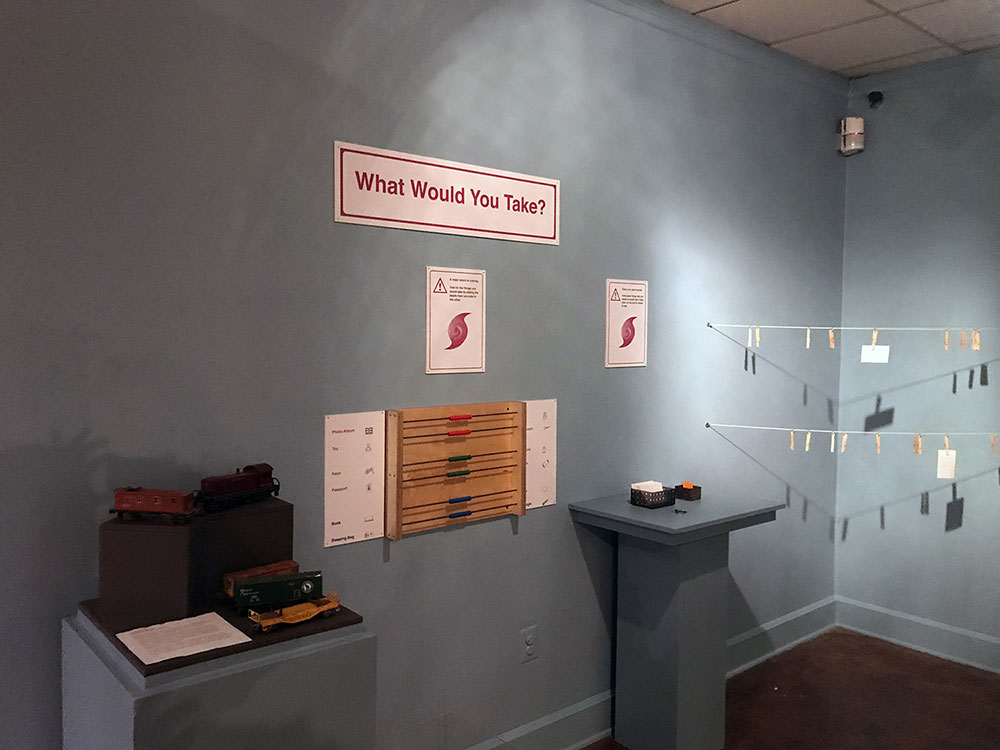In Harm’s Way exhibition
The In Harm’s Way exhibition (which was organized by Long Island Traditions in collaboration with the Long Island Museum) explores how local residents and government agencies prepare and recover from natural disasters.
Storms and hurricanes have an epic history on Long Island and in Upstate New York, from the September 1938 “Long Island Express” hurricane to the devastating winds and waves of Superstorm Sandy in 2012.
Paul Orselli Workshop (POW!) provided exhibition development, as well as interactive exhibit components and graphic elements for this memorable history exhibition.
Wall Map
A graphical wall map showing the locations of historic hurricanes around Long Island and featuring historic images associated with each storm. POW! developed and installed this feature in collaboration with Kim Wagner Nolan.
Block Table
An interactive block-building table designed and developed by Paul Orselli Workshop (POW!) for the In Harm’s Way exhibition. Here visitors can build their own scale structures designed to resist storm damage.
Bay House Interior
A classic Bay House is featured in the exhibition. POW! provided custom graphics in this area of the exhibition.

